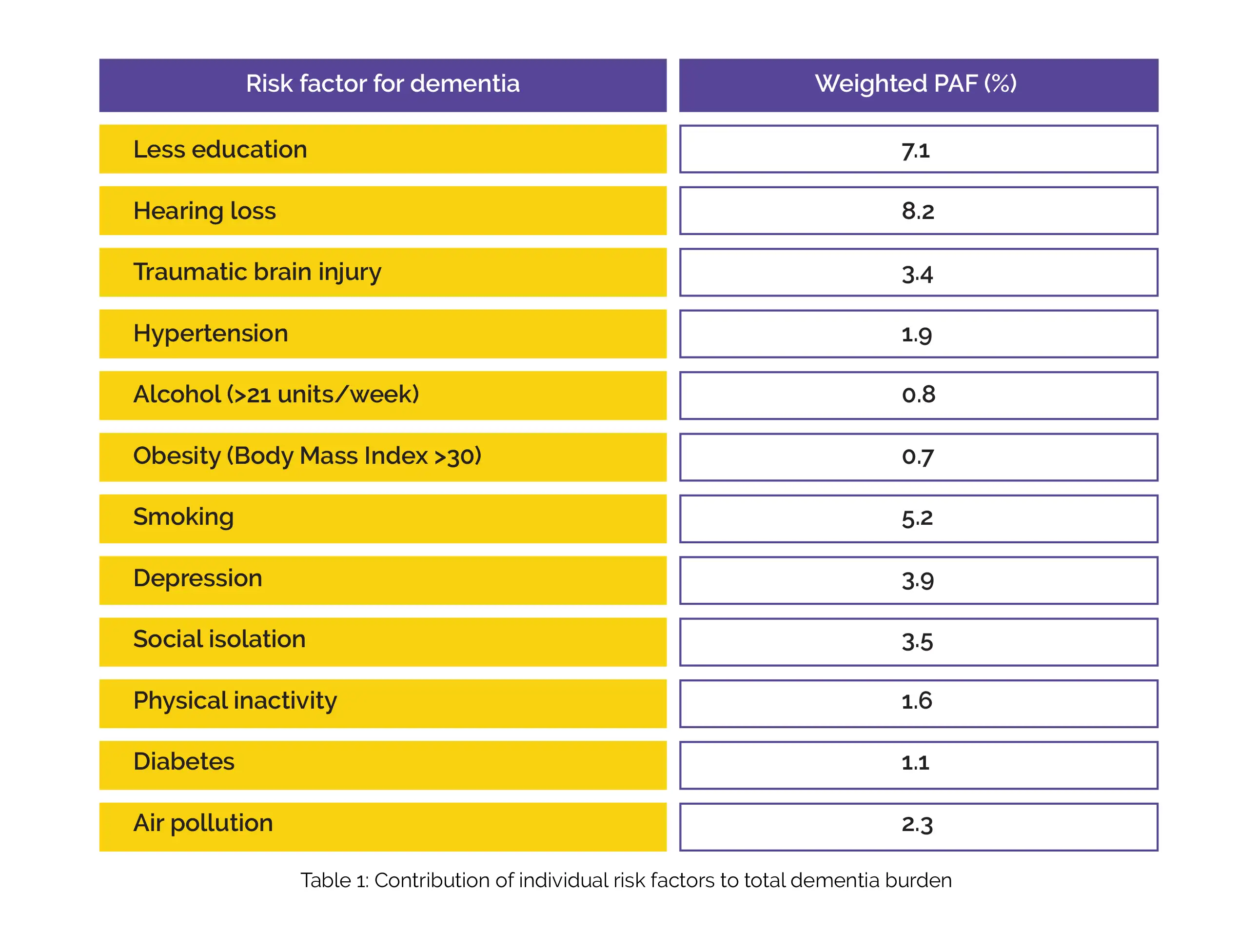Categories
Change Password!
Reset Password!


Air pollution, excessive alcohol misuse, and traumatic brain injury are the three novel risk factors identified for dementia.
Modification of twelve risk factors over the life course may aid in delaying or preventing 40% of dementia cases, according to the findings of a novel report. In the initial report, 9 modifiable risk factors were recognized that were accountable for one-third cases of dementia. Regarding risk factors for dementia, 3 novel modifiable risk factors (air pollution, chronic alcohol drinking, traumatic brain injury) have been added to the latest updated list of Lancet Commission on Dementia Prevention, Intervention, and Care.
The original 9 risk factors were diabetes, not completing secondary education, social isolation, hypertension, obesity, hearing loss, smoking, depression, and physical inactivity. Overall, these twelve risk factors account for 40% of world's dementia cases. Traumatic brain injury is generally triggered by boxing, horse riding and other recreational sports, car, motorcycle, and bicycle injuries; falls; military exposures; and firearms. In mouse models and in humans, a single severe traumatic brain injury was found to be related to extensive hyperphosphorylated tau pathology.
Furthermore, numerous studies have shown that traumatic brain injury is linked with a considerably elevated risk for long-term dementia. Regarding alcohol misuse, the report stated that a wide array of evidence has emerged on alcohol's complex association with dementia and cognition outcomes. According to a study that included more than 31 million hospitalized people, alcohol use disorders were linked with a threefold raised dementia risk. It was recommended that it is bad to drink more than 21 units of alcohol/week.
Regarding air pollution, the report cited that in animal studies, airborne particulate pollutants have been noted to substantially trigger neurodegeneration. Furthermore, residential wood burning, high concentrations of nitrogen dioxide, and fine ambient particulate matter from traffic exhaust have been found in past research to be linked with the raised occurrence of dementia.
Investigators explored contribution of each risk factor to dementia, expressed as population-attributable fraction (PAF). The proof that hearing loss is one of the most crucial risk factors for development of dementia is extremely robust. Hearing loss exhibited the greatest effect, subsequently followed by reduced education levels in young people and smoking, as shown in Table 1:

Early-life education, systolic blood pressure, and social interaction are the other risk factors for which the evidence base has intensified since the 2017 report. Diet and sleep are the 2 risk factors that have not made it onto the list of modifiable risk factors. This was indeed the most comprehensive overview into dementia risk to date and emphasized the significance of acting at a personal and policy level to minimize the risk of dementia.
There is no definite way of avoiding dementia development. The optimum way to keep a brain healthy and fit as it ages is to stay mentally and physically active. Furthermore, consuming a well-balanced diet, avoiding smoking, drinking only within suggested limits, and keeping blood pressure, weight, and cholesterol level in check may also assist to prevent dementia risk, concluded the study authors.
Medscape
Twelve Risk Factors Linked to 40% of World's Dementia Cases
Sue Hughes
Comments (0)